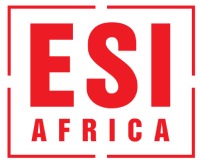Communities the ultimate beneficiaries of mine power plants – Kwasi Ampofo
Communities can become the ultimate beneficiaries of power when mines create generation plants on site
There are three models emerging across Africa in terms of ownership structure and what happens to power infrastructure after a mine completes its operations and moves on.
These include:
- a public-private partnership (PPP) where the infrastructure gets transferred to the national power utility when the mine leaves;
- the mining company going into a joint venture (JV) with an independent power producer (IPP) with the latter keeping the infrastructure after the mine moves on; and
- the mining company providing finance to the national energy utility to build the power plant with the latter retaining it after a completed offtake agreement.
These were insights from Kwasi Ampofo, advisory board member at Investing in African Mining Indaba and head of metals and mining at commodity markets research firm BloombergNEF.
ESI Africa caught up with Ampofo at a media briefing hosted by Investing in African Mining Indaba in Sandton Johannesburg to explore the role played by partnerships in shaping the future of African mining.
Emerging models for mine power plants in Africa
Ampofo said, essentially, there are also three factors that drive these models. “Most mining companies are in very remote locations where it’s very difficult for government to establish something like a power infrastructure. The issue of reliability also plays a big role because national power utilities tend to struggle with providing constant power, which is detrimental to mining. This is why we saw companies starting to invest in alternatives, whether diesel, battery or solar, in order to address the gap.”
The third driver is cheaper alternative, he says. “If you look at the midstream, like chrome processing and manganese processing, even for steel processing, a lot of these companies have been complaining about the rising cost of power from Eskom, and are looking at cheaper alternatives in order to stay in business.”
“If you’re going to rely on government to build the grid extension or the transmission extension to you, it might take forever. So what we’ve seen is that, as a result of the remote location of some of these new mines, companies are investing in their own independent power generation capacity.
Power plants at mines is an evolving niche
“Up until I would say five years ago, it was practically impossible for any individual to contribute or build any power plants in South Africa. It was the sole responsibility of Eskom to generate power, to transmit power, and to distribute it through the municipalities in some instances. But the government has sort of started deregularising the industry.”
“First of all, in theory a power plant is a PPP. There are instances where the mining company builds it, but then it still has to sell excess energy into the national grid. In some cases if, for instance, the mine has a life of mine of 25 years, it builds and operates the system for 25 years and thereafter transfers it to Eskom. So it does not necessarily get handed over directly to the surrounding community. Also these are very contractual, it differs from one contract to the other.”
Ampofo said the second model, which is quite common, is where mining companies form JVs with IPPs. “The mine does not build the power plant itself. The IPP owns the infrastructure. They are typically providers to the mining industry, and the municipalities as well. So regardless of what happens to the mine, the facility is owned by a power generation entity. This model is viable especially if the mine has a shorter life of mine.”
He added that one factor liked by mining companies is that the costs associated with building and running the plant are not on their balance sheet. However they can have an offtake agreement in perpetuity.
Financing and energy utilities
A third model, which has historically been the model throughout Africa, is where the mining company provides finance to the national energy utility to build the plant.
“We saw that happen with a mining company and the Société Nationale d’Électricité in the Democratic Republic of the Congo where the company provided the money to the utility to build the power plant, and then they would get, let’s say, 40% offtake. So that could also be a potential model for Eskom. In that instance, if the mine leaves tomorrow, that property becomes the utility’s own, and then it can sell to whoever it want to sell to.”
Ampofo said eventually, with all the three models, communities become the ultimate beneficiaries. “Whoever’s taking over after the mine is gone, do they make sure that the community continues to benefit? We have found that they always do. Because who are the communities? They are your workers. They are the mine villagers. So it’s never in isolation, because there are 20,000 people that come to work every day and live in those communities.
“I’ve never, ever seen any risk in the mining industry where communities would not get access to power as a result of the mining company making a decision.”
Cover photo: Smelting metal requires a steady supply of high heat, necessitating a reliable power supply. Source: bodanhoda©123rf


